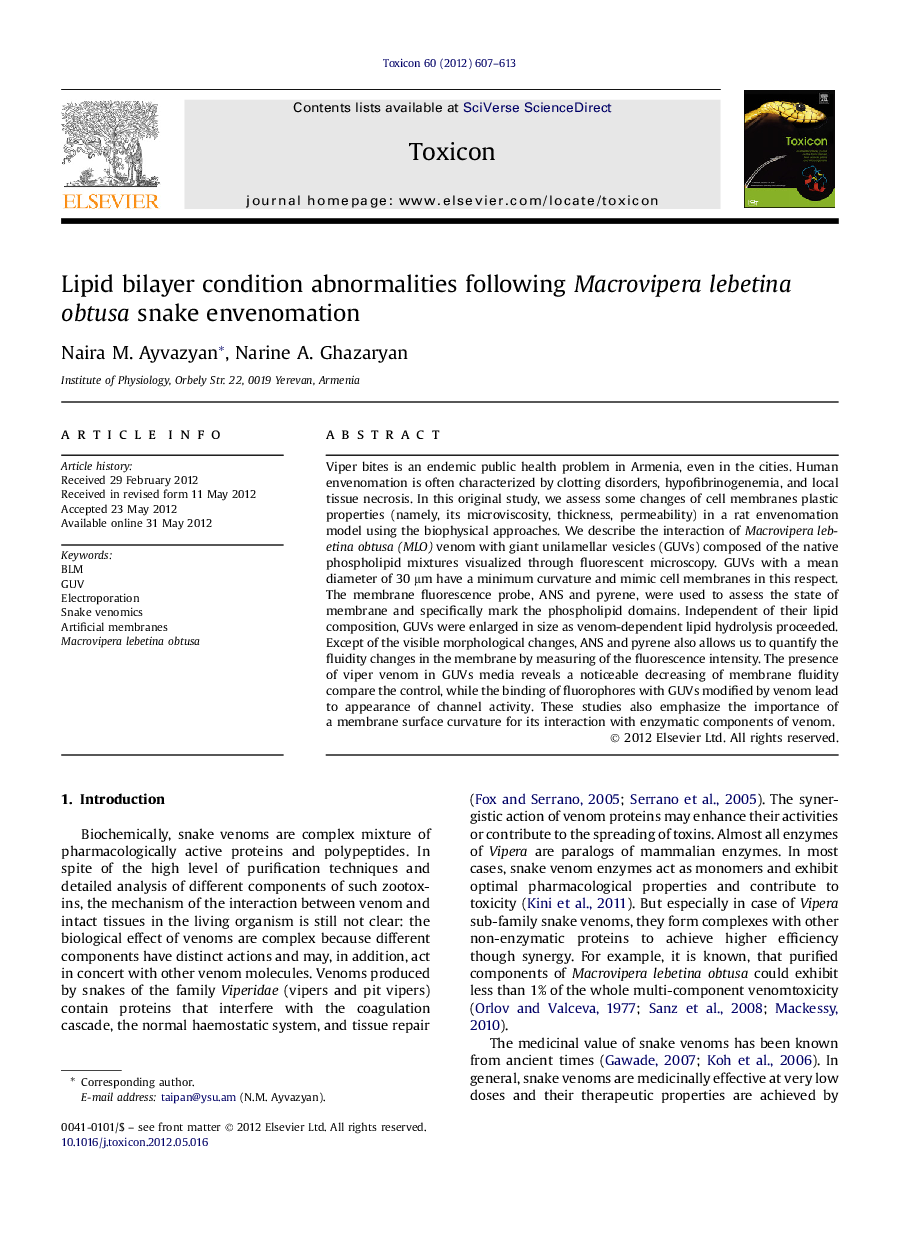| Article ID | Journal | Published Year | Pages | File Type |
|---|---|---|---|---|
| 10879895 | Toxicon | 2012 | 7 Pages |
Abstract
The membrane fluorescence probe, ANS and pyrene, were used to assess the state of membrane and specifically mark the phospholipid domains. Independent of their lipid composition, GUVs were enlarged in size as venom-dependent lipid hydrolysis proceeded. Except of the visible morphological changes, ANS and pyrene also allows us to quantify the fluidity changes in the membrane by measuring of the fluorescence intensity. The presence of viper venom in GUVs media reveals a noticeable decreasing of membrane fluidity compare the control, while the binding of fluorophores with GUVs modified by venom lead to appearance of channel activity. These studies also emphasize the importance of a membrane surface curvature for its interaction with enzymatic components of venom.
Related Topics
Life Sciences
Biochemistry, Genetics and Molecular Biology
Biochemistry, Genetics and Molecular Biology (General)
Authors
Naira M. Ayvazyan, Narine A. Ghazaryan,
